The 2019 North Dallas tornado made artist Tom Hoitsma think about the courage, strength, and tenacity it takes to be human. And it reminded him of the trials and triumphs of his own life. Learn how he has rebirthed tragedy into something joyful.
The day after a tornado zigzagged across his North Dallas neighborhood, artist Tom Hoitsma and his daughter Pilar opened their front door and gingerly walked outside.
They wanted to see what had happened the night before while the power was out. The atmosphere felt heavy, and the smell of the air was earthy and strong.
“No one else was out,” Hoitsma said about that morning in October 2019. “There was no sound, no insects, no birds, just dead quiet.”
He wasn’t looking for inspiration or a pivot from painting the abstract art that, after years away, he’d finally gotten back to focusing on. He was just curious. But what he found amid the debris that morning four years ago — who he met and how he felt — overcame him and changed everything.
“We saw a couple looking at what was left of their house,” Hoitsma said. “The roof was gone; the only exterior walls remaining were less than four feet high. Only one interior wall with a white door in the middle was left.”
It was, he said, a strange sight – even more goosebump-inducing when the couple explained that during the tornado, they and their two daughters huddled together behind that very door while the tornado ripped the roof off their home.
“Everything around them was a mess,” Hoitsma said, “but there wasn’t a mark on them. They were joyful as if they had survivor’s euphoria.”
That interaction made him think about the courage, strength, and tenacity it takes to be human. And it reminded him of the trials and triumphs of his own life. “I’ve had a lot of wakeup calls,” he said.
Rebirthing Tragedy into Something Joyful
One was a horrendous car wreck when he was 30. A blood transfusion that saved his life led to him contracting hepatitis C. He said such events, such setbacks, “keep me grounded and grateful.”
“You hear horrific stories of people who undergo unthinkable tragedies or normal, everyday bad luck. Yet somehow, they find the resolve to keep going.”
Walking in his neighborhood after the tornado flooded his mind with such thoughts. He pondered how he could use his art to reflect on what his neighbors and many people across Dallas had dealt with that fateful night and how they kept pushing forward.
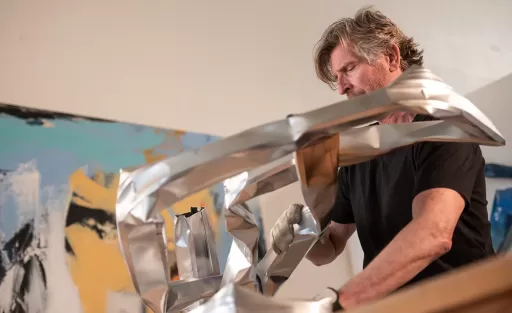
Shaping aluminum into works of art.
“I decided that the best way to articulate this as a metaphor for the human spirit would be to take this stuff ripped off people’s homes and rebirth it into something joyful, something bright,” he said.
So he did. Not immediately, though; the idea percolated for nearly a year, enough time for him to fashion what he wanted to say in his mind and soul. After the tornado, he had collected some metal on his and surrounding blocks, but he needed more. He found a business that could make 10-foot-long square pipes of aluminum, on which he jumped up and down to make them look, as he said, “tortured.”
Then he fashioned them into hearts — not defined, Valentine’s Day hearts, but used, worn, battered sculptures – metaphors of resiliency.
“These were much more meaningful to me than painting,” he said.
“People who were fans of my painting said, ‘I don’t get it. What are you doing?’”
“I said, ‘I’m not doing it for you. I’m doing it for me.’”
An Artful Journey Filled with Twists and Turns
Hoitsma’s house was untouched by the tornado, but his life — in more ways than the car wreck that almost killed him — is its own reflection of resiliency. He was born into a family of four kids, a number that grew with step-and half-siblings each time one of his parents married yet again. No one ever encouraged him to do his art or much of anything; no one led him to believe in himself or that he had anything to offer.
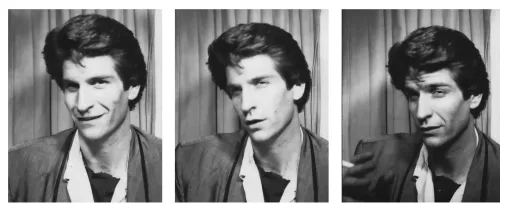
The many faces of Hoitsma as a young artist.
He left New Jersey, where he grew up, to attend art school in New York and work at a gallery. But where he had hoped to find fulfillment and encouragement within himself, he found none. And he did not receive it from those with whom he worked. “The artists were so pretentious. If success meant working with these folks daily, that was not for me,” he said. “I didn’t know you don’t have to be in a museum or have your work in the best galleries to have a thriving art career. That is what I was taught, though, and I wanted nothing to do with that.”
So, Hoitsma began looking for other ways to make a living in a place other than the Northeast. He had, he said, “developed bad habits” — alcohol and drug abuse — and was ready to turn his life around. He found a job in Dallas selling ads for television. He did that for four years, then started a company that made technology television shows. He enjoyed that, especially when it led to producing shows about another love of his — music.
“When I went to New York,” Hoitsma said, “I stopped playing music and focused on art. I was disillusioned with art when I moved to Texas and returned to making music.” He moved to Los Angeles for a while, but when he returned to Texas, he began incorporating painting into his life again. And one day, about eight years ago, he woke up and decided that to be true to his soul, he needed to focus on his art — not just sporadically, but as part of who he is.
“I said to myself, ‘All you’ve ever cared about is making art. Everything else has been window dressing,’” Hoitsma said. “I decided to work every day. I hired a nanny to pick the kids up at 3:30 from school and stay with them until 6 when I painted.”
He became a father at age 45 when his son Cruz was born. Pilar followed three years later.
“I had never wanted to get married or have kids,” Hoitsma said. “I had no idea what a father was supposed to do, but I do know what he was not supposed to do, so I started there. I wasn’t going to be like my father and stepfather — not present and terrible role models.”
And he hasn’t been. His kids, he said, are his greatest source of pride. He’s proud of them and himself for creating a chain of stability in their lives and in his own. Although he and his wife divorced when Cruz and Pilar were preteens, they share custody and remain united for their children. When Hoitsma talks about finding joy in the little moments, in the mundane — “all day, every day” — those include time with Cruz and Pilar
“I make sure I pay attention when terrible things happen around me or don’t happen,” he said. “I don’t get in a slump. I’m lucky that way; I don’t get blue.”
It is a good time for him. He’s making art, and — as part of The Rewind, his ’80s cover band — he’s making music, too.
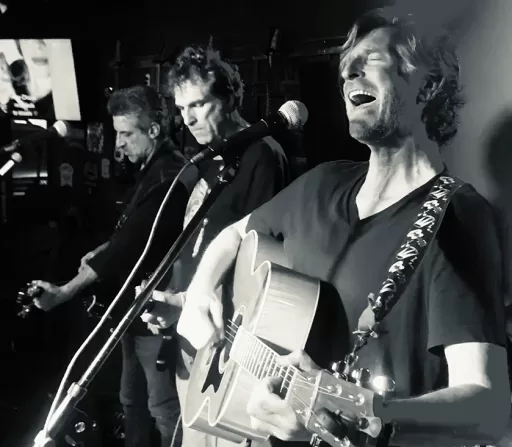
Artist Tom Hoitsma playing with his band, The Rewind.
His life has had setbacks, yet Hoitsma doesn’t dwell on them.
Instead, he focuses on doors that remain standing, smiles that melt away unthinkable losses, and hearts that keep beating no matter how often they’re twisted or stepped on.
“There’s beauty in all this,” he said. “Life goes on, the sun rises. We just dust ourselves off, try to put on a new coat of paint, and get out there.”


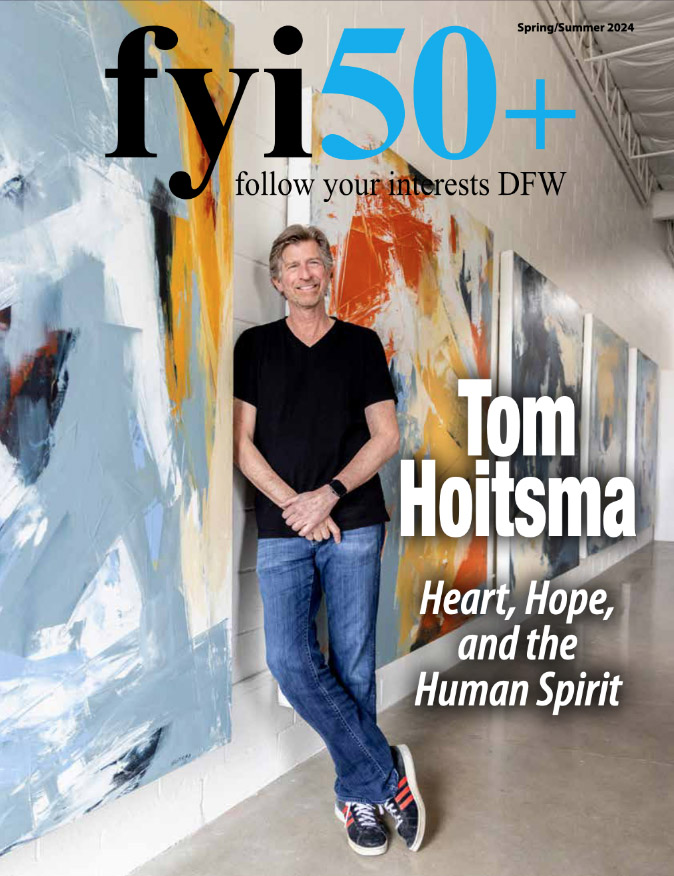
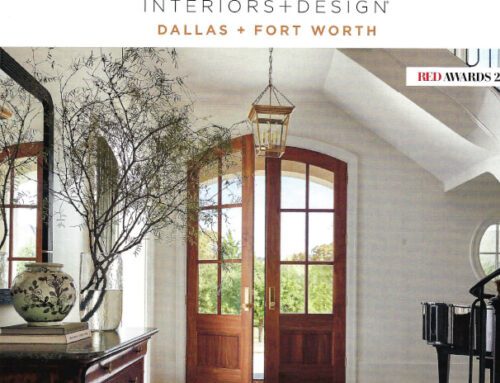


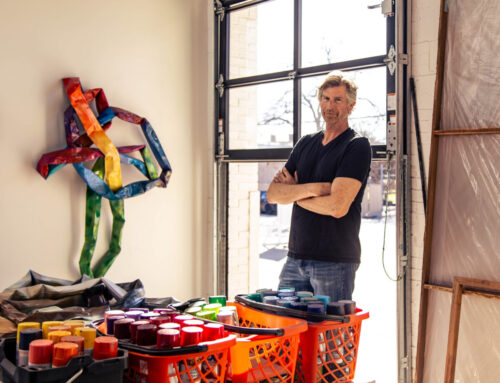
Leave A Comment